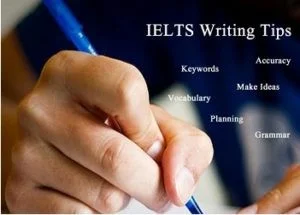How to Prepare for IELTS (Common Tips)
Get familiarized with the format and pattern of IELTS right before taking the test. Skills required for passing the IELTS test take time to build up. You can’t cram things and think of passing out the test easily. Instead of wasting time and energy on useless cramming activities, you need to follow some IELTS Exam tips like managing your time and using it effectively. Sit to study when you feel fresh according to a planning timetable. Set goals and ensure you have adequate breaks in between. All four modules: Reading, Writing, Listening, and Speaking, carry equal importance. You have to polish each skill carefully, and it is suggested to spend more time on the weakest IELTS module. Be aware of the exam pattern, the order of each section, its length, and question types. There are many easily available resources to help you practice all these skills well.
Preparing with a study partner or group is obviously an excellent idea. This may make you aware of issues that you might not even think of and overlooked. Seek the help of your family members or English teacher. You cannot start with ABCD in English. You have to review your skills and know the techniques of passing the IELTS Exam. It is important to follow a healthy lifestyle including exercise, rest, eat, and sleep well to properly concentrate on your preparations. Get familiar with the test location in advance. If you are totally new to the location, try to visit the place two to three weeks before the test day.

IELTS Listening Tips
-
All questions are compulsory in the listening test. No negative marking is done for incorrect answers.
-
Stay tightly concentrated and focused until you complete the test. Even a slight diversion may make you lose the sequence of your answers making you feel panic and uneasy.
-
The IELTS Listening test consists of four sections and a total of 40 questions. This test has to be completed in 30 minutes and a further 10 minutes are provided to transfer your answers onto an answer sheet.
-
At the beginning of each section of the recording, you will be given time to read the questions. Use this time to read the questions pertaining to that section (the voice on the tape will tell you how many questions to read) and underline the keywords in each question on the question booklet, just like “when”, “where”, “who” and “what”, which tells you what to listen for. Time is also provided at the end of each section to check your answers. Make effective use of this time to read questions for the next section.
-
If the question specifies that you do not have to use more than three words in your answer, then after writing 4 words you will not get any points for that question.
-
Read the questions as well as instructions carefully. If you are asked to mark A, B, C, and D as the answer to a question, do the same. Don’t write any phrase that corresponds to the answer.
-
Answers in the recorded conversation appear in the same order as the questions are given.
-
The speakers often correct themselves. They will say something initially and will then change the statement. For example, “We will go in March” is said first, and then “No, let’s make it May”. The correct answer is the final statement, i.e. May and not March. Watch out for this and make sure you write the final correct answer.
-
In case you omit an answer, don’t get nervous. Stay confident and get ready for the next answer.
-
Immediately write down the answer on the question sheet itself. Don’t try to memorize the answers or write on the answer sheet. You will be given ten minutes at the end of the test that are sufficient to transfer your answers onto the answer sheet.
-
The IELTS listening part is easier than other modules, but it does not mean that you take it lightly and do not prepare it that seriously. It will fetch you a good score and will boost your overall band score, so take it very seriously.
-
Listen to some English programs and new channels on RADIO for at least half an hour on a daily basis. Don’t watch these programs on TV because TV is visual and scenes & visuals easily distract us. Listen but don’t hear!
-
So these are some IELTS listening tips now let’s move to the reading section.

IELTS Reading Tips
-
All questions are compulsory in the reading module. No negative marking is done for incorrect answers.
-
The IELTS reading module is the most difficult part for many candidates. The candidate has to read three long sections, each with multiple paragraphs. The candidate has to answer a total of 40 questions (13 to 14 questions per section).
-
The Academic Reading Module takes a total of 60 minutes. There are three reading passages with a total of 1500 to 2,000 words.
-
No extra time is given to the candidate at the end of the test to transfer their answers onto the answer sheet.
-
The test material is picked from magazines, journals, books, and newspapers. While at least one text contains detailed logical arguments, one may include non-verbal content such as diagrams, articles, or images.
-
You have only 60 minutes to complete the test. So manage your time right before you start with your test.
-
Scanning is what one does; for example, when looking for a phone number in a directory. You know the specific information you are looking for and you go down the page quickly to find it. This technique is used when answering questions such as multiple-choice and matching. You scan the passage to quickly find the information mentioned in the question. Once you find it, you catch the answer from the passage and write it against the question.
-
Skimming refers to reading a paragraph quickly to get an idea of what it is about, without trying to understand its details. This technology is part of the initial reading (see below). It can be modified (reading a little slower) to answer “Provide headings for the paragraphs”, “In which paragraph does this information appear in the text?” and “Author’s views” sort of questions.
-
Do not get stuck on one question. If you can’t get the answer, move on. It’s no problem as you can always come back to it later.
-
First, read the question and then remember it in your mind. Mark the keywords in the questions like dates, names, places, etc. This way you will get an idea of the type of information you will be looking for.
-
Read the instructions carefully. This is very important because it is a READING test.
-
All the questions in ONE PARTICULAR SET are in a specific sequence & order, and so is the information in the paragraph. And so, if you answer 1 of a SET then logically the info in the paragraph is for 2, and so on.
-
Do at least one hour of reading daily in a quiet place & try to read at least 6 pages.
-
Daily try to attempt one passage at least and try to do it in 20 minutes.
Now before using the IELTS reading tips let’s check the question type first.
The following types of questions are asked in the IELTS Reading Test:
-
Multiple choice
-
Short-answer questions
-
Sentence completion
-
Notes/ summary/ diagram/ flow chart/ table completion
-
Choosing from a “heading bank” for identified paragraphs/ sections of the text
-
Identification of writer’s views/attitudes/ claims
-
Classification
-
Matching lists/phrases
Candidates can write their answers on the question paper, but they cannot take it out of the test room. All answers should be given in the answer sheet provided to the candidate.

IELTS Writing Tips
-
IELTS Writing Task involves two tasks. Task 2 carries more marks. Spend more time on it. Twenty minutes on task 1 and 40 minutes on task 2 would make a fine balance.
-
Task 2 is more important, so it is better to do it first and do task 1 later. Make sure that you finish writing for each task in separately given areas.
-
For both writing tasks, it is a good idea to jot down your ideas on the question sheet so that you are aware of the outline of what you will be writing. It may take 2 or 3 minutes, but the time spent is worth it.
-
In the IELTS Writing Task 1, you have to describe a graph/table/diagram in AT LEAST 150 words. So practice describing all kinds of graphs, tables, and different diagrams.
-
If you write less than 150 words, you lose marks. If you write more, you are likely to make more mistakes and waste time as well. Try and stick to around 170 words.
-
For task 1, spend some time looking at the graph/table first and try to understand the information given.
-
It may not be possible to describe all the data as there may be too much of it given. Describe the relevant and most important parts.
-
The best practice for Task 2, which tells you to present an argument, is to read the newspaper editorials and magazine articles on current topics, it will help you develop your thoughts.
-
If there are multiple graphs/charts, describe any comparison or trend that can be carried out. One last sentence that tells statistics/trends.
The Writing Module is divided into two tasks so after the IELTS writing tips let’s move toward the task details.
A suggested structure for writing task 2 is:
-
Introduce the subject and tell your stand confidently, whether you agree or disagree.
-
Give arguments in support of your viewpoint supported by relevant examples.
-
State the contrary viewpoint and tell the reason why you do not agree with it.
-
Wrap up with a short concluding paragraph.
-
If there is time left at the end, revise your answers and correct any spelling or grammatical mistakes.
A suggested structure for writing task 1 is:
-
Introduction (What it is, Do not copy the question. Use your imagination and write in your own words what is the data)
-
In the next paragraph, write General trends, Comparisons, and Differences. This step is of high importance.
-
In the last paragraph, write the conclusion.
-
Use a pencil to write and take a new good quality eraser and sharpener with you. Write at least twenty words more than the necessary limit. In this way, the tester gets the idea that you have confidence and you can easily write.
Some Important Writing Task-2 Topics
-
Crime
-
Arts/Traditions/Culture
-
Children
-
Parents
-
Education
-
Travel/Tourism
-
Health
-
Nature
-
Animals
-
Sports/Games & many more…

IELTS Speaking Tips
-
The IELTS Speaking test consists of three parts. In the first part, the examiner introduces him and asks you your name, address, interests, and occupation. This part is fairly simple and goes for 4 to 5 minutes.
-
In the first part, the candidate has to give answers to very general questions about themselves, their homes/ families, their jobs/studies, their interests, and a range of similar familiar topic areas. This part lasts between four and five minutes.
-
In the second part, you will be provided with a sheet of paper and a topic to write on it. You have to speak for 2 minutes on the given topic. You can’t ask for a change of topic. You are given 1 minute to write down your ideas.
-
Make sure you read all the questions relating to the Cue Card written on the paper as provided by the examiner. It usually has two or three parts which you will have to talk about. Don’t miss out on any questions or you will lose marks.
-
In part 3 examiners ask you some questions on what you have talked about.
-
In Part 3 the examiner and candidate engage in a discussion of more abstract issues and concepts which are thematically linked to the topic prompt in Part 2. The discussion lasts between four and five minutes.
-
The most important thing that will help you in the speaking test is to use English in your everyday conversations.
-
Avoid using your native language for a few weeks before the test and converse only in English. This will make you confident and you will talk fluently on the test.
-
Watch English movies or English programs on television to improve your pronunciation and expand your vocabulary.
-
The thing you have to remember is: to use easy words and expressions if you are not very confident and everything will go well.
-
You don’t need to worry about accent. You will be marked on the basis of your fluency, vocabulary, grammar, pronunciation, and ideas.
-
The conversation usually lasts up to 15-20 minutes and will be recorded. Don’t panic about that!!
The IELTS Speaking Tips is not finished yet. You can get more tips every day by joining our IELTS Institutes in Chandigarh/ Ambala/ Kurukshetra or Amritsar locations.
How to clear IELTS in the first attempt?
With a profusion of better opportunities and a chance at having a pronounced career, every year thousands of Indians decide to study abroad.
Are you one of them? Does the university you want to go to require IELTS? Are you not sure about how to clear IELTS in the first attempt? Don’t worry because you have landed at the right place and these IELTS Exam Tips will definitely help you.
Cracking an IELTS exam requires massive effort and smart preparation; anyone who thinks otherwise might be living in a delusion. A lot of people appear for the exam but only a few come forward with flying colors because of their extensive hard work and a few tips and tricks.
So, here are a few substantially helpful tips and tricks to help you clear IELTS in the first attempt;
-
Stay dedicated, focused, and determined when studying for the exam. You can also join an IELTS coaching center to avail assistance in your preparation.
-
Focus individually on all the parts of the exam i.e. Listening, Reading, Writing, and Speaking. Each part requires equal attention.
-
The question paper also includes multiple-choice questions. The applicants make the mistake of mainly focusing on subjective questions and taking MCQs’ for granted.
-
It is very important to appear for all the questions in the question paper. Manage your time properly and do not skip any questions due to improper time management.
-
Make sure your writing speed is fast enough while appearing for the IELTS writing test because you have limited time. You do not want to perform poorly due to your slow writing speed. Just remember that only practice can make you perfect!
-
For the IELTS speaking test, make sure you are fluent in speaking English and have a proper accent.
-
Your accent should not sound fake or forced.
There are also a few basic requirements to crack the IELTS Exam.
-
Your marks in +2, under-graduation, or post-graduation should be suitable according to exam guidelines.
-
You are required to enroll in a professional university or company.
-
The age consideration for the IELTS exam is above 16 years.
-
Make sure you have a sound knowledge of English and can speak it fluently. The test is devised to check your English language proficiency.
-
There is no particular amount of time that can make sure you are ready to take the test. But, if you are a good English speaker, a month or two of serious practice can help you crack the exam.
-
The IELTS exam is eligible for every race, religion, gender, and nationality.
So, if you have been looking for tips and tricks to crack the IELTS exam on the first go, I hope the information above serves the purpose.If you want to gather more information about scoring well in the IELTS exam, you can definitely join the top IELTS institute, Western Overseas.
